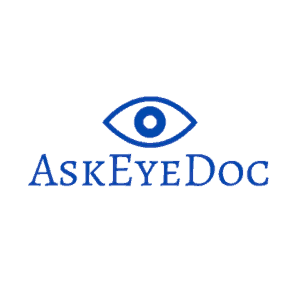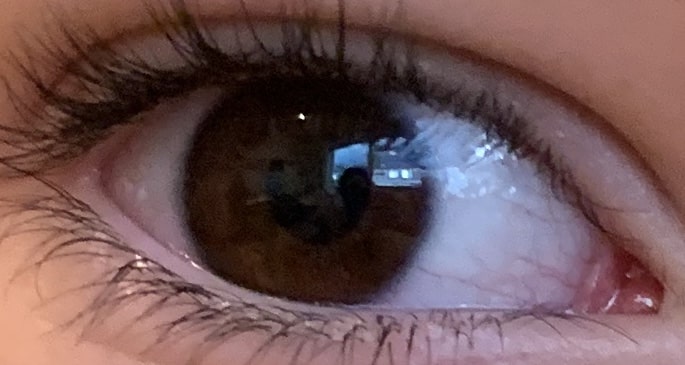Glaucoma is a silent disease, meaning it presents early on without any symptoms at all. It isn’t until glaucoma is far advanced that someone would have symptoms of vision loss usually starting with peripheral vision loss. If left untreated glaucoma can cause blindness or significant vision loss.
Glaucoma is a life-long eye disease
Although glaucoma is a life-long eye disease, early diagnosis, and treatment can prevent vision loss. It is the patients’ responsibility to follow the direction of their doctor and continue to have regular eye exams.
Glaucoma Evaluation
Most glaucoma patients are seen 2-4 times per year. During these eye exams, the ocular health will be evaluated and the intraocular pressure (IOP) will be measured. Glaucoma is usually associated with high intraocular pressure compressing the delicate nerve fibers and leading to optic nerve damage. However, there is also low-pressure glaucoma, in which the IOP is low but optic nerve damage is still apparent.
In some cases, low eye pressure can be a result of a thin cornea. The corneal thickness is measured with a device called a pachymeter. A thick cornea can lead to higher pressure readings. Think about a balloon vs a soccer ball. The amount of pressure it takes to push on a balloon is much less than the soccer ball. This is because a balloon is very thin and a soccer ball is much thicker. The same goes for the eyeball, if the cornea is very thick we can get a high eye pressure reading compared to a thin cornea. A patient who has had LASIK in the past will have a thinner cornea, which could give the doctor a low IOP measurement.
The primary goal of glaucoma treatment is to maintain a normal or lower IOP. This is usually achieved with the use of daily medicated eye drops. Checking your eye pressure at every visit lets your doctor know if your eye drops are working effectively. Patients with low eye pressure may still benefit from medicated eye drops to lower the IOP and prevent further optic nerve damage.
Glaucoma assessment usually includes an annual dilated eye exam, a computerized scan of the optic nerve to evaluate optic nerve damage, and a visual field exam to measure your peripheral vision. These tests are usually performed annually to determine the progression of the disease.
The doctor may also perform gonioscopy, a lens that allows the doctor to view the angle of the eye. This is important because the angle of the eye is where the fluid of the eye (aqueous humour) drains. When the angle is narrow it can block the drainage area of the eye and cause a pressure spike.
Some patients have anatomical narrow angles that can be treated with a laser to prevent them from closing in the future. This type of laser treatment is called Laser peripheral iridotomy (LRI).
Glaucoma medications only work if you use them
If you have glaucoma, then you are probably using eye drops to lower your eye pressure. Nerve damage from glaucoma due to high eye pressure is permanent and the slow loss of vision starting with peripheral vision loss is often unnoticeable by the patient.
Treating glaucoma is preventative
The medications lower pressure to prevent further damage. Since high eye pressure does not cause pain, blurred vision or any other symptoms, using eye drops regularly does not provide any detectable relief to the patient. It is natural to think that since the eye drops don’t make you feel better or see better that they are not working. The only way to know if your eye drops are working is to have regularly scheduled eye exams to determine if your eye pressure is lower based on your original baseline eye pressure.
There are several reasons that patients with glaucoma don’t use their medicated eye drops as regularly as they should.
Forgetting to use your eye drops
If you are new to glaucoma and using eye drops, it is easy to forget. Try to use your eye drops at the same time every day to get into a routine. If you use your eye drops in the morning it might be helpful to use them whenever you brush your teeth or eat breakfast. If you have been directed to use your eye drops at night, it is usually good to use them right before bed. You can even set a reminder on your phone.
Side Effects of Glaucoma eye drops
Some glaucoma eye drops have bothersome side effects, which can make it difficult to use them since patients don’t have symptoms to begin with.
Side effects can include stinging, redness, darkening of lashes. If you are experiencing life-altering symptoms such as asthma or erectile dysfunction, let your eye doctor know, so that you can try other treatment options.
Cost of Glaucoma medications
Prescription medications can have a huge financial impact on patients, especially when it comes to medications that need to be used for the extent of one’s life. If you are unable to afford your medications most drug companies have special programs that will provide you with medications at a reduced price. You can also talk to your provider to see if there are generic options that can be tried.
Difficulty instilling eye drops
It is not uncommon for patients to have a hard time getting eye drops into their eyes. Some bottles are difficult to squeeze, especially if you have arthritis, weakness or tremors. Pulling your lower eyelid down and squeezing the drop into the lower eyelid can be helpful.
As with most things in life, the more you do it, the better you’ll get at it.
The Bottom Line
When it comes to Glaucoma it is important to follow the instructions of your doctor, use your eye drops and have regularly scheduled eye exams. If you have problems with your glaucoma treatment then talk to you doctor, there may be alternative drops that you could try. Glaucoma is a life-long eye disease that if left untreated could cause blindness. In the early stages of glaucoma, there is no vision loss so early treatment is critical to maintaining good vision.


